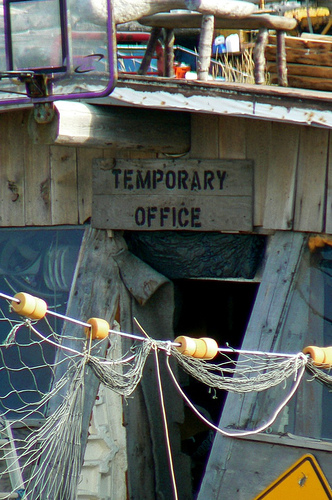When you run a small business cash flow is everything. Cash coming in allows you to buy more advertising, product, and equipment. Without it you aren’t in business, you’re giving you services or products away.
Let’s say your biggest client routinely pays in 30 days. Their orders keep increasing, so you figure business is good. Thirty days comes and goes. You call them and they tell you things are going gangbusters, and they really need you to be patient because their customers are a little slow in paying. You go along because you don’t want to offend your biggest customer. Before long, you’re begging your suppliers for extended terms because your need their products for resale. But because you haven’t been paid by your customer you can’t afford to buy the supplies. Then, whammo, you read in the news that your customer has closed their doors. It happens all too often.
Even if all of your customers eventually pay, your business can still wind up “growing broke” if the flow of funds out is significantly faster than the flow of funds in.So, first step, be tough. Write a polite but stern letter or call your customers and tell them you can’t continue to keep your prices low unless they pay earlier. Add a substantial late payment fee for those companies who don’t comply. A 5% late fee per month is equal to an interest rate of 60% per year which will go a long way toward financing your cash flow problems. Assuming you eventually are paid, of course.
Second step, make sure you have financing .
If you’re in good financial shape and the companies you sell to are good credit risks, it should be easy find a bank that will provide you a line of credit to fund the cash flow problem.
If you’re a new business, a very fast growing business, or generally not the ideal bank borrower for what ever reason-but your customers are good credit risks-you might look into an asset-based line of credit with a bank or commercial finance company. Using your accounts receivable (A/R) as collateral, this kind of lender will monitor you’re A/R and immediately lend you 50-90% on the dollar. The actual percentage they lend will be based on a variety of factors including the age of your receivables, the underlying credit quality, and the nature of your customers. At the extreme, your customers will pay the lender, not you. This is typically done through a post office box so that your customers aren’t even aware of it. Such a relationship is known as Accounts Receivable Factoring and is offered by banks and finance companies. Their fees range from 1% to 5% of the face value of the receivables. If you choose to go this route, be sure to increase your prices to reflect the additional cost.
Finally you could accept credit card payments from your customers. This is a simple process of establishing a merchant account with a bank or other financial service provider. Their fees typically range from 1-3% of the transaction and provide immediate funds to you while they worry about getting paid by your customers. There are thousands of such companies whose rates vary significantly so do shop around. And be sure to compare not only the discount rate (the percentage they charge per transaction), but any transaction fees, statement fees, and other fees they may levy.
For more help on small business loans, angels and other private investors, venture capital, government loans and grants, preparing a business plan or financing application, and other money management advice, check out our all new, fully revised eBook, Finding Money—Secrets of a Former Banker.








